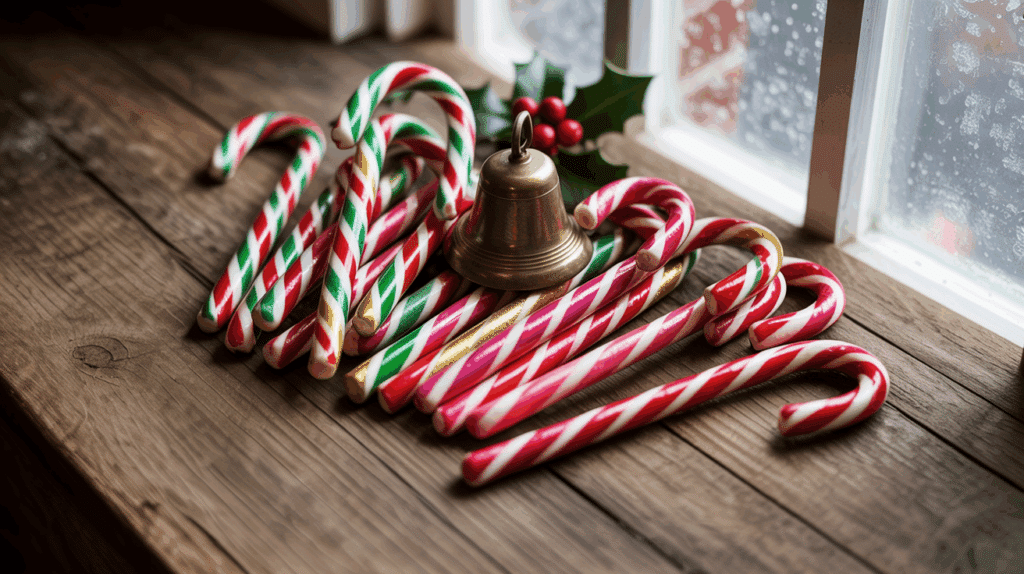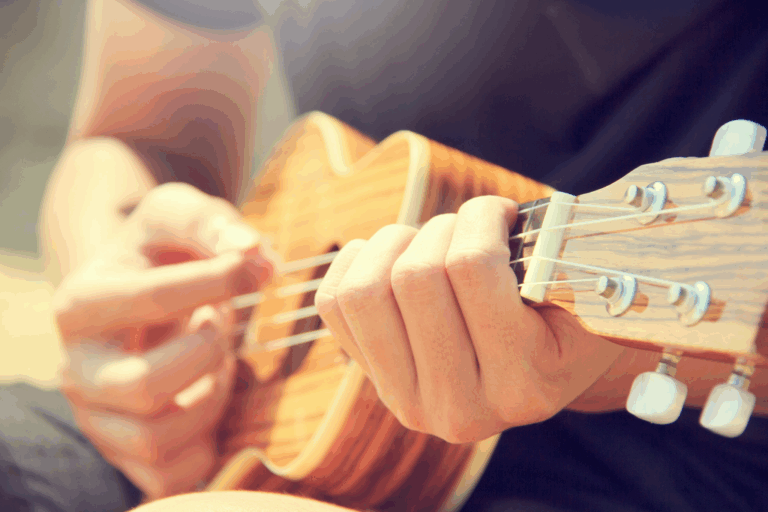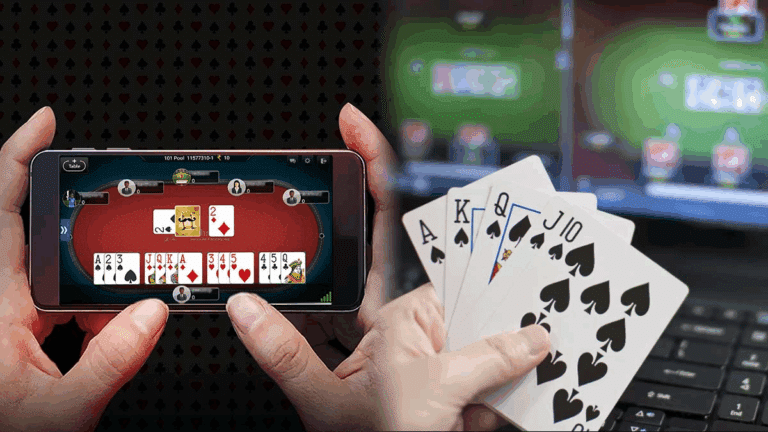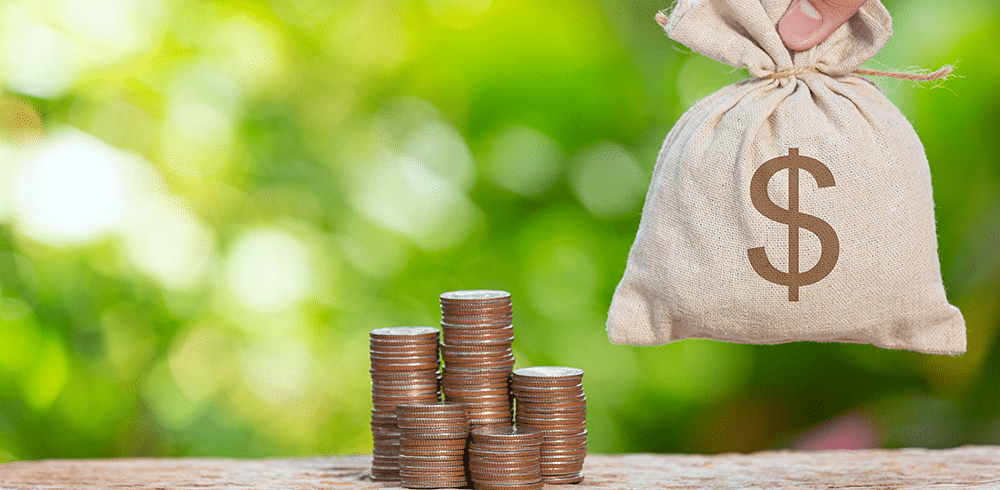Kids love candy canes during the holidays, but most parents worry about all that sugar. The striped treats seem to disappear faster than snow in spring, leaving sticky fingers and sugar highs behind.
Yet what if those same candy canes could teach children about science while they have fun?
This simple experiment turns ordinary candy canes into learning tools.
Parents can do these activities at home using simple kitchen items, making science accessible and exciting for young learners.
What is a Candy Cane Science Experiment?
A candy cane science experiment uses holiday candy to teach kids about science concepts.
These activities turn sweet treats into learning tools that help children understand how things dissolve, melt, float, and react with other materials.
Candy canes dissolve because they are made of sugar crystals. When you put a candy cane in water, the water molecules surround and pull apart the sugar molecules. This process is called dissolving.
Kids learn better when they can touch, see, and play with real objects instead of just reading about science in books.
Also, check out our other blog, “How to Do a Pumpkin Volcano Experiment at Home,” to enjoy more such experiments this holiday.
Fun Candy Cane Science Experiments for Kids
Science becomes exciting when kids use familiar objects like candy canes. These experiments teach basic chemistry and physics concepts while creating memorable learning experiences for kids.
1. Dissolving Candy Canes in Water
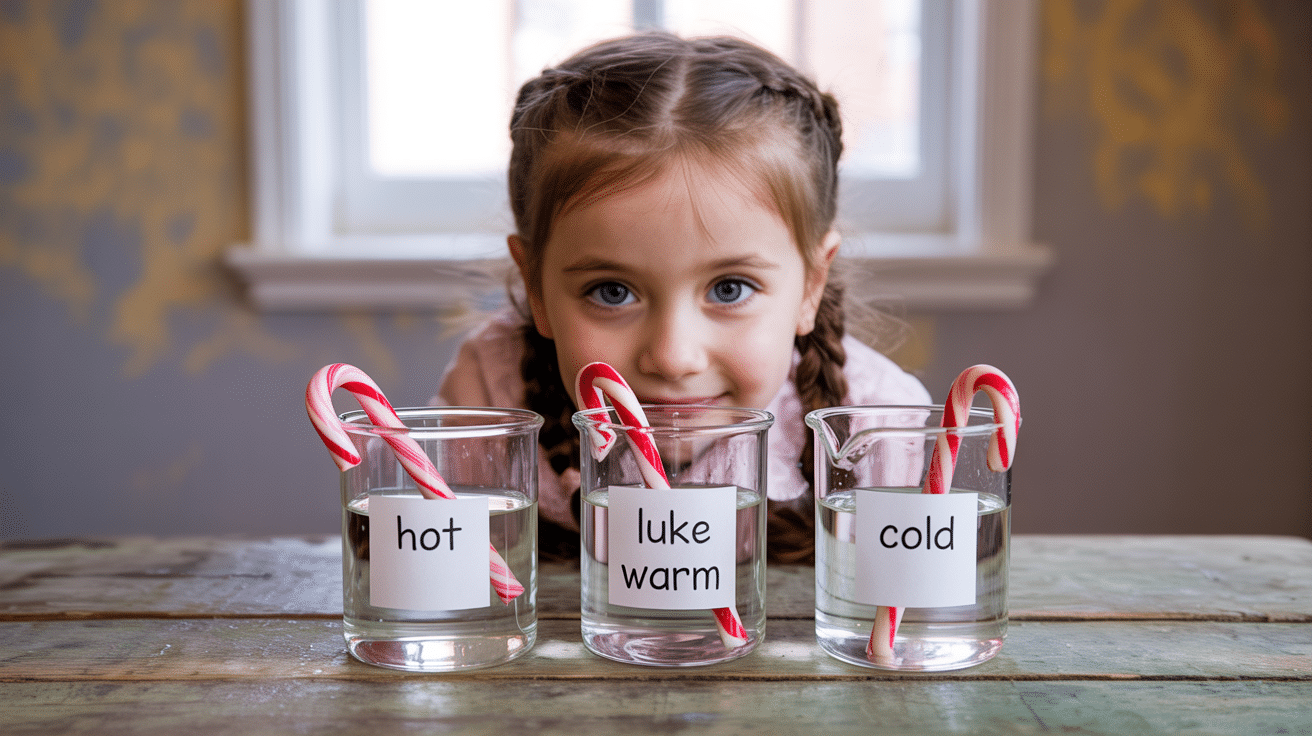
Test how water temperature affects candy dissolving speed and learn about molecular energy. This experiment is one of the simplest science experiments that shows kids why hot drinks dissolve sugar faster than cold ones.
What Kids Learn: Effects of water temperature on dissolving speed
Materials: 3 cups water (hot, lukewarm, cold), 3 candy canes, a timer
Steps:
- Fill cups with water of different temperatures
- Add a candy cane to each cup
- Start the timer and observe changes
- Record which dissolves fastest
2. Dissolving in Different Liquids
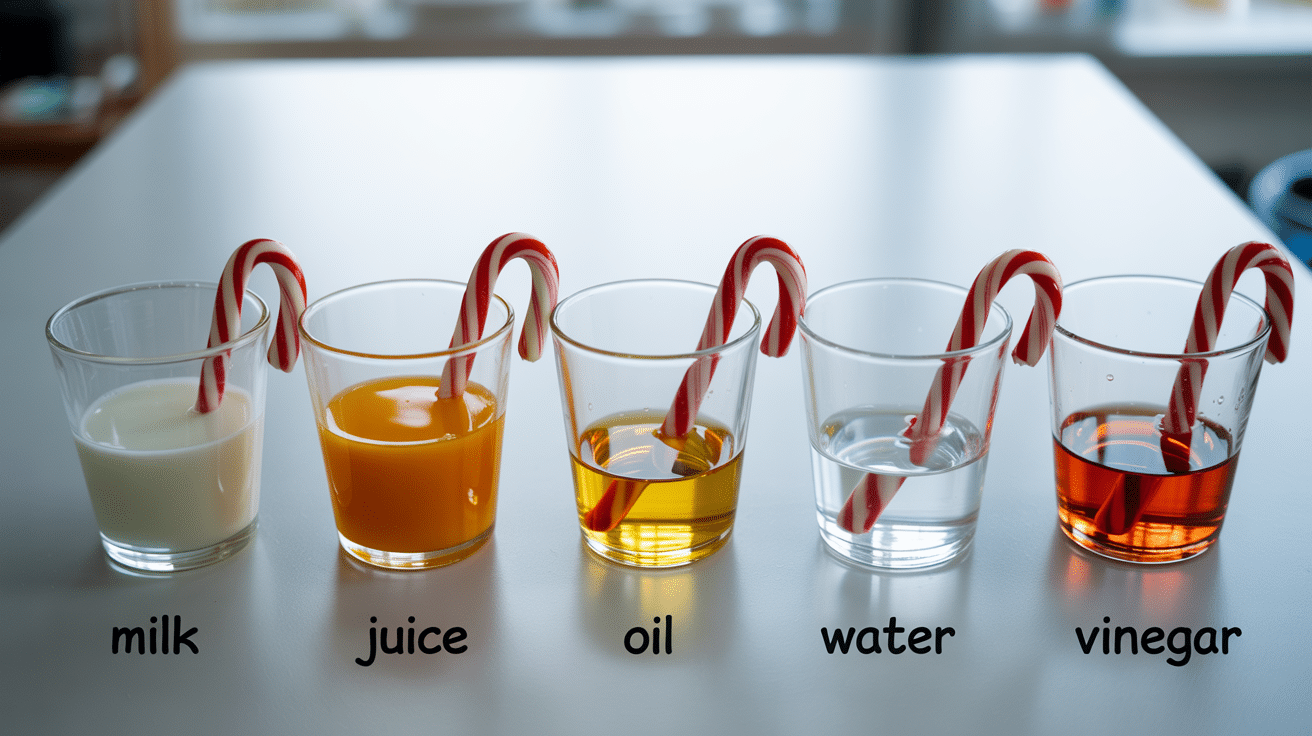
Find out how different liquids affect candy solubility and molecular interactions. This experiment teaches kids about polar and non-polar substances through hands-on observation and helps them to compare candy canes in different liquids.
What Kids Learn: How different liquids affect solubility rates
Materials: 5 liquids (water, vinegar, oil, juice, milk), 5 candy canes, cups, timer
Steps:
- Pour each liquid into separate cups
- Add candy cane to each liquid
- Observe dissolution rates over time
- Compare which liquids work best
3. Dancing Candy Canes
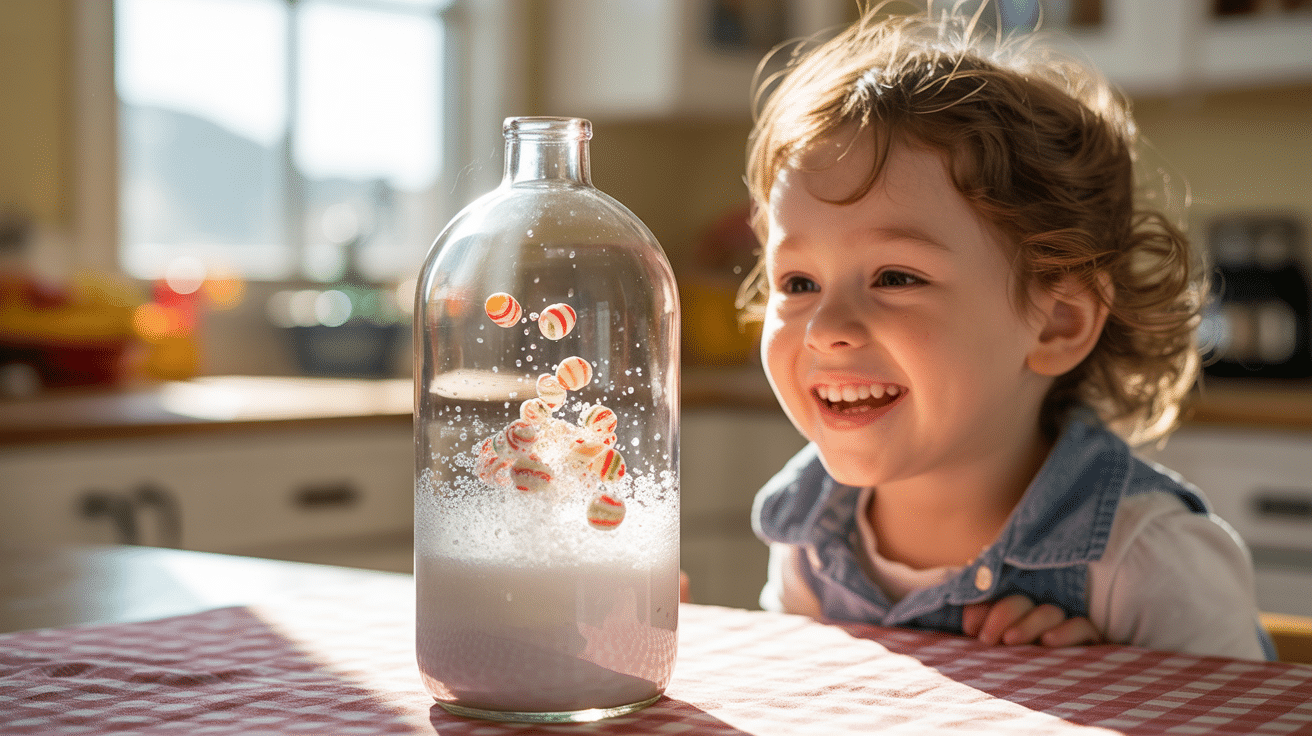
Watch candy pieces move and dance through chemical reactions that create gas bubbles. This experiment teaches kids about acid-base reactions. It is very fun and engaging for kids to watch and perform.
What Kids Learn: Chemical reactions create gas and movement
Materials: Baking soda, vinegar, glass bottle, crushed candy cane pieces
Steps:
- Fill the bottle halfway with vinegar
- Add baking soda quickly
- Drop in candy pieces immediately
- Watch pieces dance around
Disclaimer: Perform this experiment under adult supervision only.
4. Candy Cane Ornaments
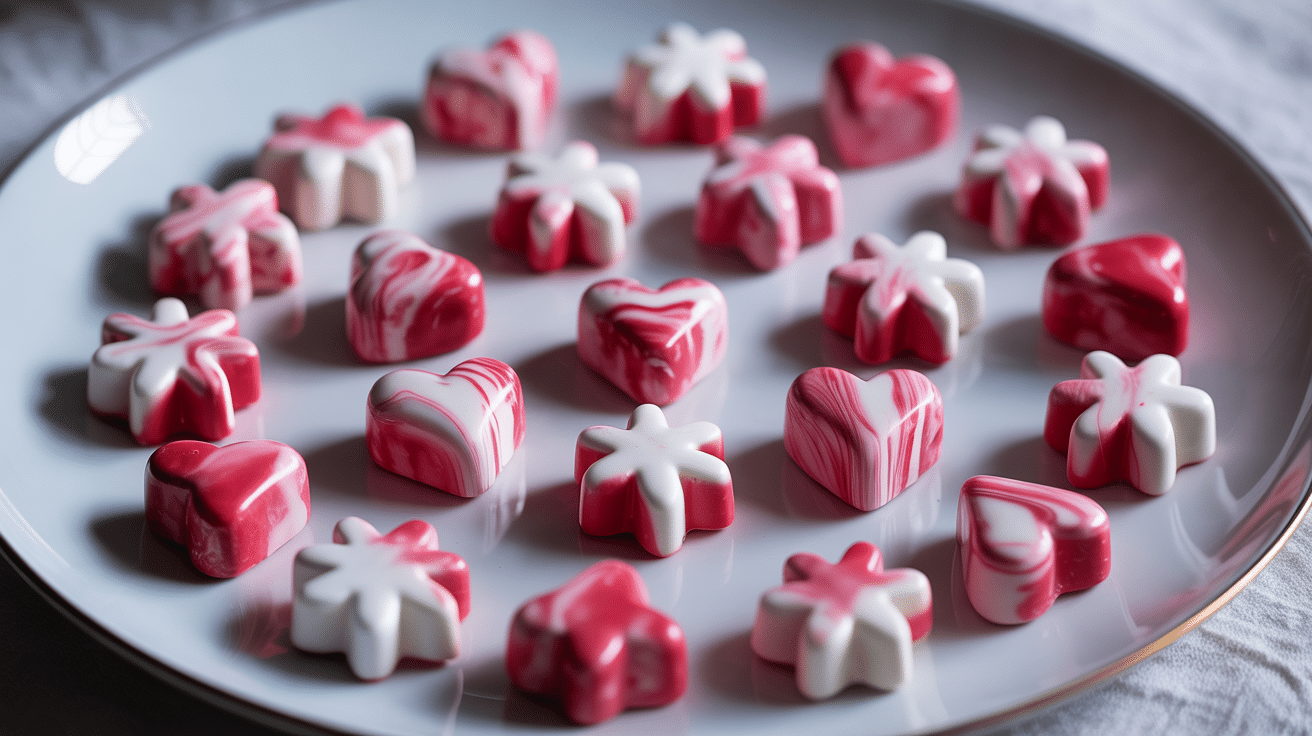
You can create decorative shapes by melting and cooling candy canes to understand the concept of phase changes. This experiment shows how heat transforms solid candy into liquid and back again.
What Kids Learn: How melting and cooling change candy states
Materials: 6 candy canes, cookie cutters, foil, oven
Steps:
- Break the candy into small pieces
- Cover one side of cookie cutters with foil
- Heat at 350°F until melted
- Cool completely before removing
Disclaimer: Perform this experiment under adult supervision only.
5. Candy Cane Sink or Float
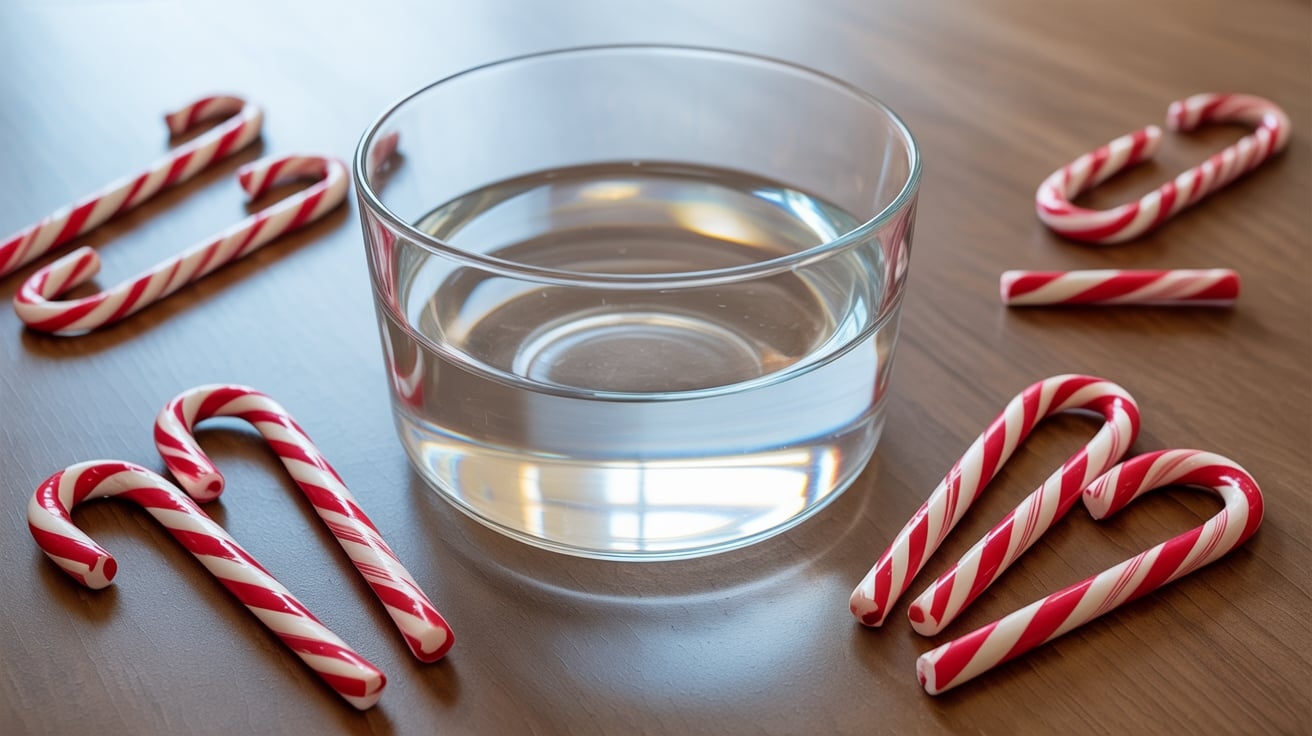
You can test buoyancy principles by observing how a candy cane behaves in water. This experiment teaches kids about density and water displacement through simple observations.
This is one of the easiest science experiments, as it can be performed easily by kids.
What Kids Learn: Basic principle of density
Materials: Water bowl, whole candy canes, broken pieces
Steps:
- Fill the bowl with water
- Drop whole candy canes in water
- Test broken pieces of different sizes
- Record which items sink or float
Safety Tips while doing These Experiments
Adult supervision ensures the safety of children during the candy cane science experiment.
These simple precautions prevent accidents while allowing kids to explore science concepts through hands-on learning experiences.
- Adult supervision required: Have an adult present during all steps of the experiment, especially when using hot water or heat sources.
- Watch the temperature: Use warm, not boiling water to avoid burns. Test the water temperature before letting kids handle it.
- Keep workspace clean: Wipe up sticky spills immediately to prevent slips and falls. Candy residue can make surfaces slippery.
- Food safety first: Use clean hands and utensils. Don’t eat candy canes that have been used in experiments or touched dirty surfaces.
- Small parts warning: Keep broken candy cane pieces away from young children who might put them in their mouths.
Final Thoughts
These candy cane experiments prove that learning science doesn’t require expensive lab equipment. Simple household items and holiday treats can teach children about chemistry, physics, and biology in ways textbooks never could.
Each candy cane science experiment offers parents a chance to bond with their kids while building scientific curiosity.
So grab those leftover candy canes and start experimenting. Your kitchen can become a laboratory where sweet treats meet scientific wonder. Watch as your children’s eyes light up with each new finding they make.
What will you and your kids try first? Share your results and let us know which experiment became your family’s favorite!


